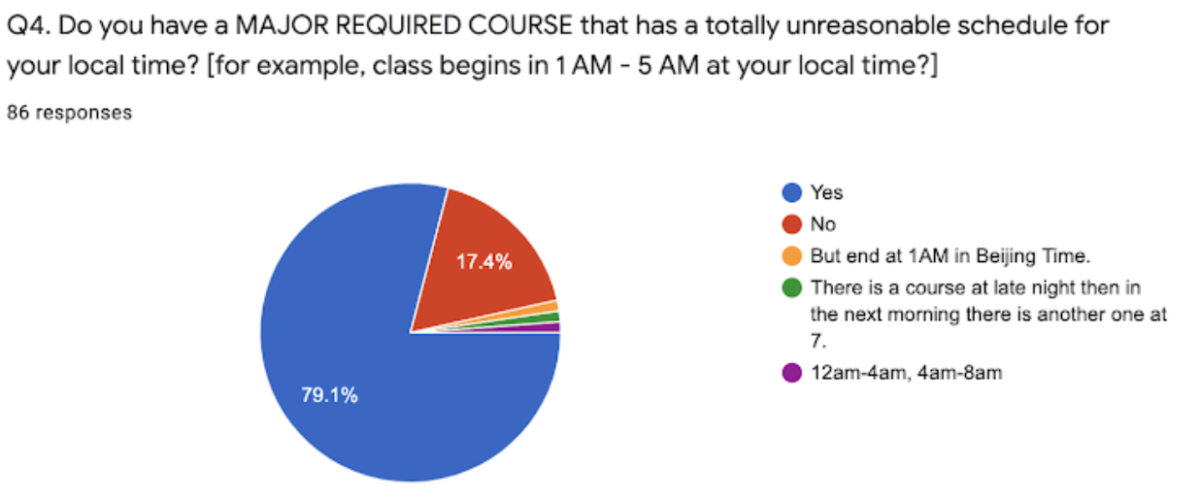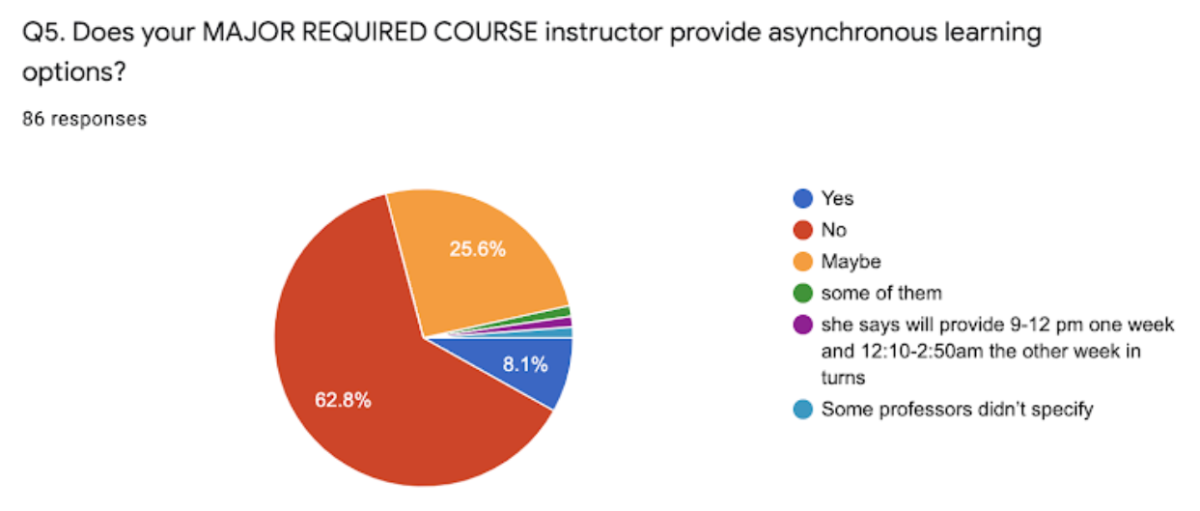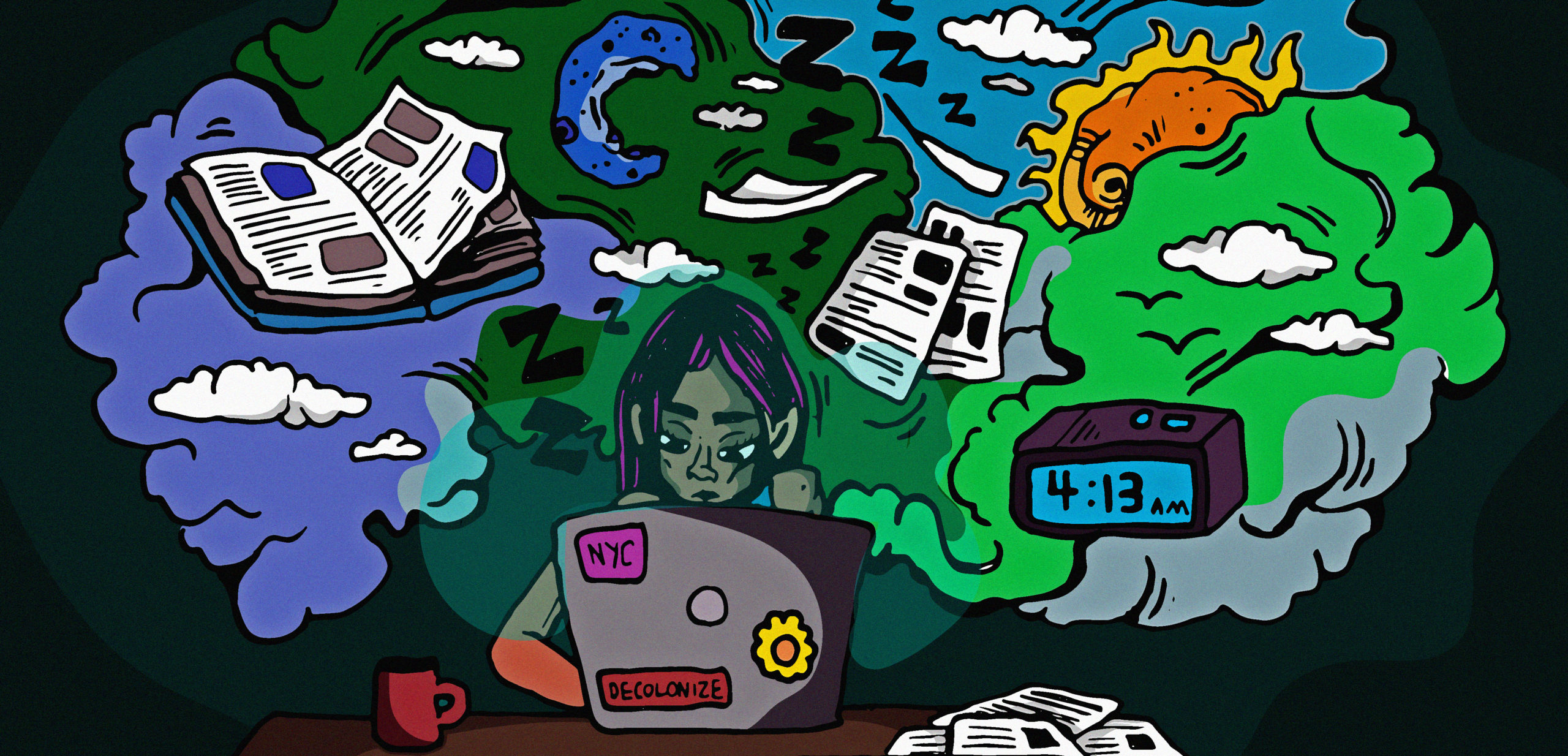Chiedza Kaseke, a Parsons student, studies six hours ahead of New York time in South Africa and has started drinking coffee again, with “lots of milk and three spoons of sugar,” to stay awake for classes that can go past two in the morning.
Kaseke is not alone in their experience at the New School, which has a 34% international student body according to The New School website. Since the Provost Office announced in June 2020 that the fall semester would be held remotely, students studying outside of New York City have been faced with the additional challenge of navigating time zone differences, sometimes as extreme as 12 hours.
It’s these circumstances that led Chairman of Chinese Students and Scholars Association(CSSA) and Parson’s senior in Design & Tech Ray Xia to create a petition calling for asynchronous learning options for all major requirements. Xia also surveyed her peers about the support they felt they received from faculty.
The petition stresses the importance of asynchronous major requirement classes to ensure a timely graduation, and addresses the refusal for accommodation by certain professors. It lists possible solutions, including recording weekly Zoom classes with the consent of the class, pre-recorded lecture videos, and additional office hours.
“Everything else other than major requirement courses (i.e. electives, program electives, ULEC, liberal arts) can be all postponed or taken in a different semester without interfering with the students’ intended graduation schedule,” wrote Xia.


According to the 86 responses recorded in the petition survey, whose audience is mainly Chinese students, 79.1% consider their major requirement courses unreasonable in their local time, 62.8% expressed that their instructors do not provide any accommodations for different time zones, while 25.6% of the students answered “maybe.”
The petition is in its final stage of revision and has not yet been sent to administration. Students have yet to determine when the petition will be sent.
According to data provided by The New School, degree seeking enrollment for this fall is down approximately 10% from last year. Of the 1,503 classes offered in the course catalogue, only 77 were asynchronous before the pandemic, meaning they could be completed on students’ independant schedules rather than meeting routinely as a class.
Those asynchronous classes were only offered at the School of Public Engagement and Adult Bachelor’s or as ULEC classes. Due to the coronavirus scattering students into different geographical locations, other departments at the New School have been faced with the task of incorporating asynchronous options into previously synchronous courses.
According to The New School, the Guide to Online Teaching and Learning was rolled out in early July to guide faculty in creating a successful design for online courses for students. Faculty who are teaching this fall were also prepared through a summer-long training launched by Distributed Education and learned how to use Canvas more effectively to create asynchronous courses that contain weekly assignments, materials, lectures and activities. As of September 24, nearly 1,900 faculty have enrolled in that training and over 900 have completed. The training is still ongoing with new workshops planned for Spring.
Professor Dana D’Amico teaches a six hour studio course “Design 1,” a major requirement for second year Product and Design majors, and felt The New School encouraged faculty to be flexible around accommodating students in other time zones.
“We [the Professors] were meant to incorporate asynchronous learning,” D’Amico said.
The curriculum for Design 1 was revised “to get everything done in the first three hours” because the class goes “into one, two, three A.M. in the morning for students that are in Asia,” Prof. D’Amico explained.
The department heads of the major keep in touch daily on a group text message, which has been helpful, according to D’Amico. “Navigating through this, you’re not alone,” she said.
However, D’Amico questioned how to create asynchronous options that are equitable for both the domestic and international time zones. She doesn’t know how to tell “the kids in Asia” that they “can leave and go to sleep,” she said, while expecting the rest of her students with smaller time zone differences to stay in class.
The human brain operates on a natural circadian rhythm, meaning it has evolved to shut down and reset at night and spring back into action in the morning. Staying awake despite these hormonal shifts related to nighttime, simply means that the brain cannot perform at its best, according to Science Watch, a report from the American Psychological Association.
“I am still expected to have the same level of contribution and concentration [as domestic students] during classes and I just don’t have that at one in the morning,” said Kasake.
An FAQ provided by The New School responded to concerns about learning in different time zones. “We will endeavor to ensure that classes are offered at multiple times that make classes accessible to students across different geographies. If you are in a time zone that may make a regular class time difficult for you to attend, please let teaching staff know,” the FAQ reads.
Students say these intentions have been met with little follow-through on behalf of faculty. Every week “feels like one long day,” said Elizabeth Hwang, who studies thirteen hours ahead of New York in Seoul, South Korea. Her studio class keeps her up past two in the morning and does not offer any recordings, according to Hwang.
Second year Product and Design major Hwang “didn’t sign up for six months in Korea.” She knew Canada as her home, but her parents sold their house and moved back to Seoul when Hwang went to college. When March came, her father urged her to spend the pandemic with them. Besides, it would only be for the rest of the spring semester, she believed. Hwang kept her computer and phone synchronized to EST.
Out of the six classes Hwang takes, only three mentioned asynchronous options, but the professors’ tone was “You’re going to miss out” and “You won’t do as well,” according to Hwang. She felt pressured to attend the live classes, even if she was “gonna be an owl.” Her mom has stopped calling her to family dinners.
“I understand they’re [the professors] are trying to accommodate for internationals and people in other time zones but I wish the school would show a little more support,” Hwang said.
Hwang wishes professors had more “flexibility with work and not to be so strict with what time we are handing in work.” Even if an assignment is turned in a minute past the deadline, Canvas will still mark it as “Late” and Hwang’s assignments are often due at bizarre times due to her time zone.
Students studying internationally are not the only ones who are being affected by the difference in time zones. There are also faculty members who are teaching abroad that have to deal with similar issues.
Srishti Yadav, a teaching fellow at Lang and a PhD student at NSSR, had to return to India during spring break because of the rapidly increasing COVID-19 cases in New York City and because she was concerned that India would close its border. She is now teaching a course from 11:30 p.m to around 1 a.m in Haryana, India.
To Yadav, the contrast between teaching online and in-person is “a world of difference.” The biggest challenge for her to teach online has been student engagement impacted by factors such as unstable internet connection, different time zones and time spent sitting in front of a laptop.
While acknowledging the advantage of asynchronous options, Yadav said that it could be hard to maintain the same level of education unless “international students are also able to do some kind of meeting with instructors and other students.”
Yadav said that, because she has international students who struggle to study overnight, she provides class recordings so that students who are not able to attend synchronous classes will not be left behind. “The most I can do is not put unnecessary pressure on them [students] from my end, and to make as many resources available as possible,” said Yadav.







